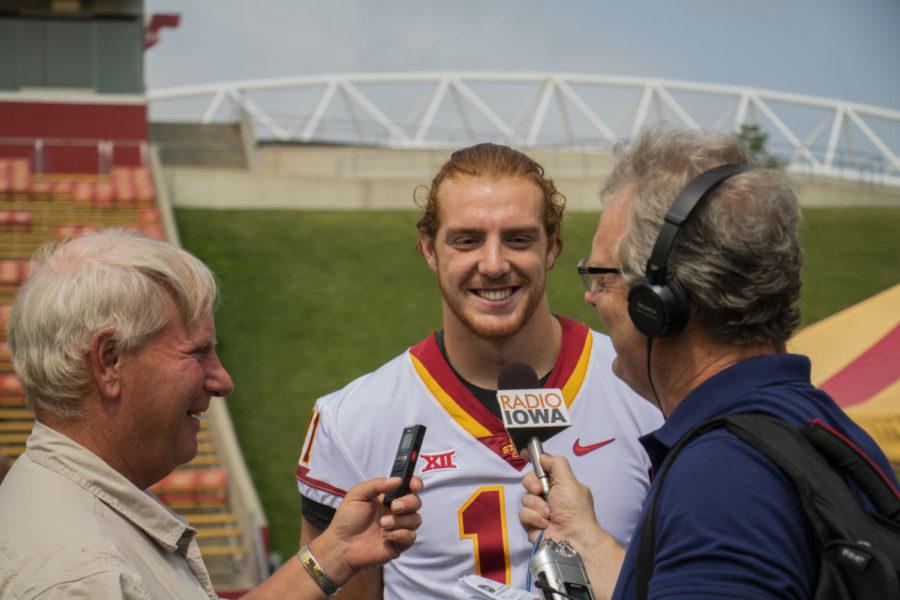Analysis: Chase Allen’s growing role and uncertain status
September 24, 2018
A lot of the injury talk around the Iowa State program right now centers around Kyle Kempt.
When will he be back? Will he start when he’s healthy? Should he start when he’s healthy?
All valid questions. However, there’s another starter whose status is uncertain for the Cyclones’ trip to TCU on Saturday (6 p.m., ESPNU), and he’s tied for fifth on the Cyclones’ roster in receptions: tight end Chase Allen.
The redshirt sophomore has only played in two games this season, but he has already surpassed his reception total from last year, when he brought in four passes for 36 yards (still, he was the Cyclones’ leading tight end).
A lot of his production has ridden on the shoulders of fellow redshirt sophomore Zeb Noland, the man with the keys to Iowa State’s offense (for now). Noland has been the quarterback for four of Allen’s five receptions, with three coming against Iowa and two against the Sooners.
Allen missed the Akron game with a groin injury he suffered late in the Oklahoma game, when he pulled up limping after running a route.
Campbell said after the Akron game that Allen’s injury status is uncertain for TCU.
“It’s more of a Tuesday/Wednesday call,” Campbell said. “I’ll have more information for you Tuesday on that.”
From the outside looking in, it seems obvious to include a healthy Allen in the Cyclones’ offensive gameplan. At 6-foot-7, 230-plus pounds and light on his feet, he fits the description of a red-zone target almost to a tee. The only problem is that, under Campbell, Iowa State hasn’t used tight ends much in the passing game.
In 2016, Campbell’s first year, tight ends combined for six receptions and 56 yards with zero touchdowns. Not exactly setting the world on fire. In 2017, the amount dropped to five receptions for 44 yards and zero touchdowns.
There’s a reason for that, too.
In August, tight ends coach and recruiting coordinator Alex Golesh said that the Cyclones place blocking as a priority for tight ends.
“I think [that’s] probably the biggest thing we tell those guys after we’re done recruiting them,” Golesh said. “We’re gonna teach you how to block somebody, we gotta run the football — that’s priority number one for us.”
Like every tight end on the Iowa State roster, Allen is adept at blocking, but he has shown over the past two seasons that he’s also the best receiving tight end the Cyclones have.
The Cyclones have been using a 12 package often this season with redshirt senior blocking tight end Sam Seonbuchner on the field at the same time as Allen. In passing downs, this usually results in Seonbuchner sitting back and blocking — which gives the Cyclones max protection and allows whoever the running back is to run a route — with Allen either lining up in the slot or running a route from a three-point stance.
Allen has six targets on the year, and he’s mainly been spotted in the middle of the field, with most of his receptions coming on in routes and curl/stop routes, utilizing his frame to present a big target for Noland.
“He’s played really good football so far,” Campbell said.
For the first time since Campbell has been at Iowa State, the Cyclones have a weapon at tight end. With his status up in the air, a developing part of the Cyclones’ struggling offense could be put on hold for another week.
















